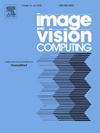GANSD: A generative adversarial network based on saliency detection for infrared and visible image fusion
IF 4.2
3区 计算机科学
Q2 COMPUTER SCIENCE, ARTIFICIAL INTELLIGENCE
引用次数: 0
Abstract
Image fusion technology, which integrates infrared images providing valuable contrast information with visible light images rich in texture details, represents an effective and rational approach for object detection and tracking. Previous methods have often neglected crucial information due to a lack of saliency detection and have failed to fully utilize complementary information by separately processing different features from the two original images. To address these limitations and enhance fusion techniques, we propose a generative adversarial network with saliency detection (GANSD) for image fusion through an adversarial process. This approach simplifies the design of fusion rules and improves the quality of fused images. By incorporating saliency detection, GANSD effectively preserves both foreground and background information from the input images. The architecture also integrates complementary information to prevent data loss from the input images. Simultaneously, an attention mechanism within the generator emphasizes the importance of different feature channels. Extensive experiments on two public datasets, TNO and Roadscene, demonstrate that GANSD provides both qualitative and quantitative advantages over nine state-of-the-art (SOTA) methods.
求助全文
约1分钟内获得全文
求助全文
来源期刊

Image and Vision Computing
工程技术-工程:电子与电气
CiteScore
8.50
自引率
8.50%
发文量
143
审稿时长
7.8 months
期刊介绍:
Image and Vision Computing has as a primary aim the provision of an effective medium of interchange for the results of high quality theoretical and applied research fundamental to all aspects of image interpretation and computer vision. The journal publishes work that proposes new image interpretation and computer vision methodology or addresses the application of such methods to real world scenes. It seeks to strengthen a deeper understanding in the discipline by encouraging the quantitative comparison and performance evaluation of the proposed methodology. The coverage includes: image interpretation, scene modelling, object recognition and tracking, shape analysis, monitoring and surveillance, active vision and robotic systems, SLAM, biologically-inspired computer vision, motion analysis, stereo vision, document image understanding, character and handwritten text recognition, face and gesture recognition, biometrics, vision-based human-computer interaction, human activity and behavior understanding, data fusion from multiple sensor inputs, image databases.
 求助内容:
求助内容: 应助结果提醒方式:
应助结果提醒方式:


